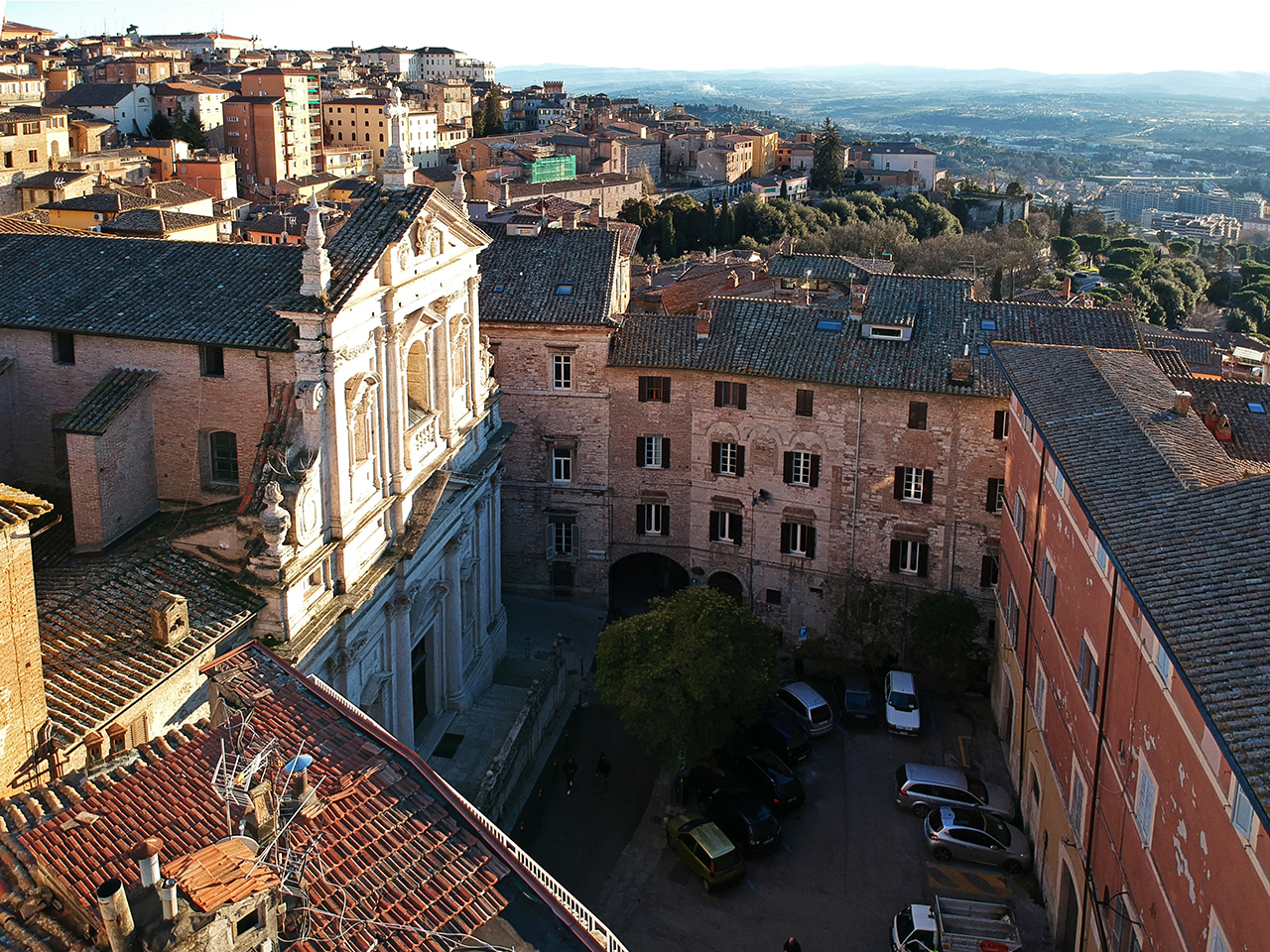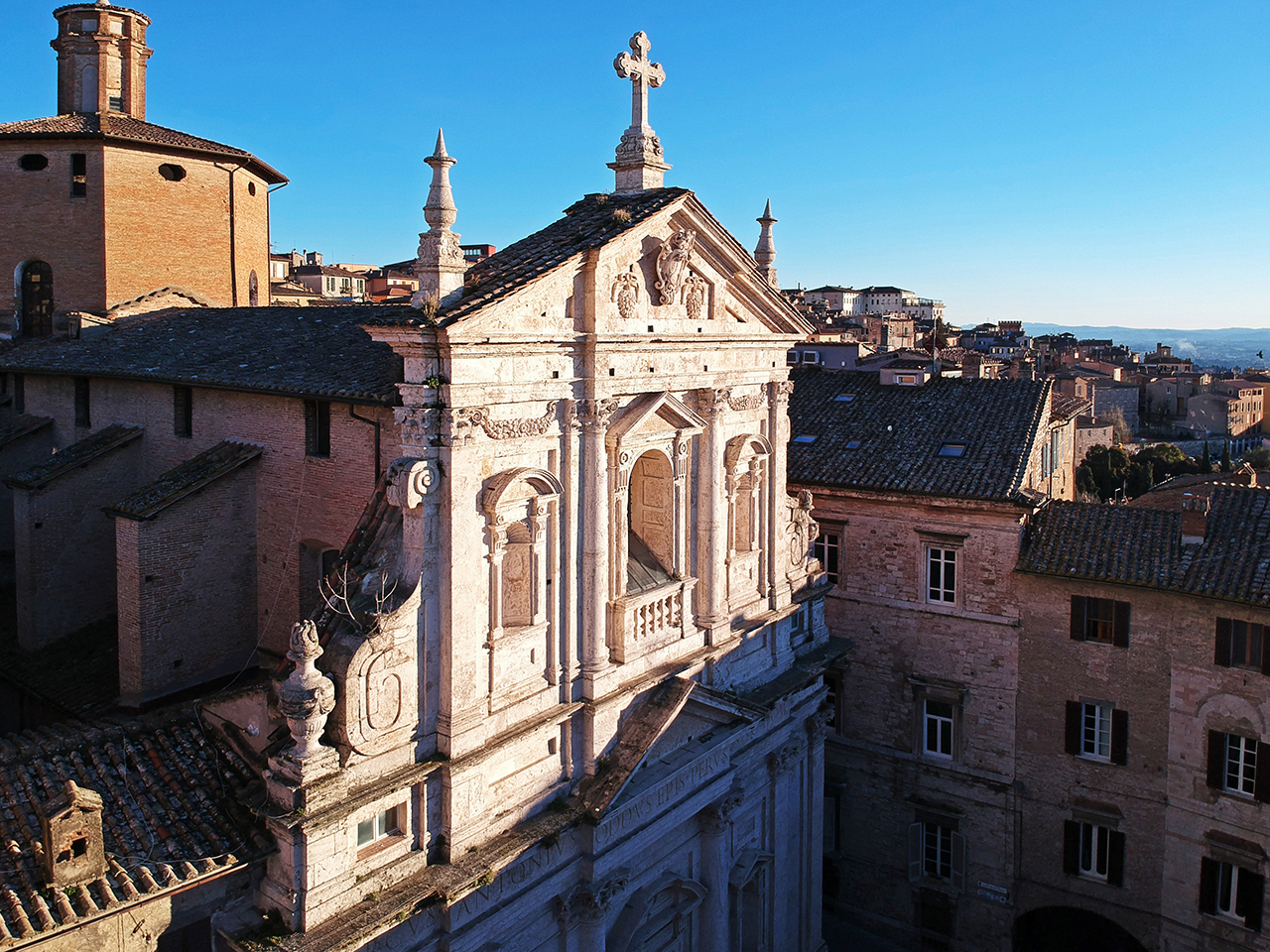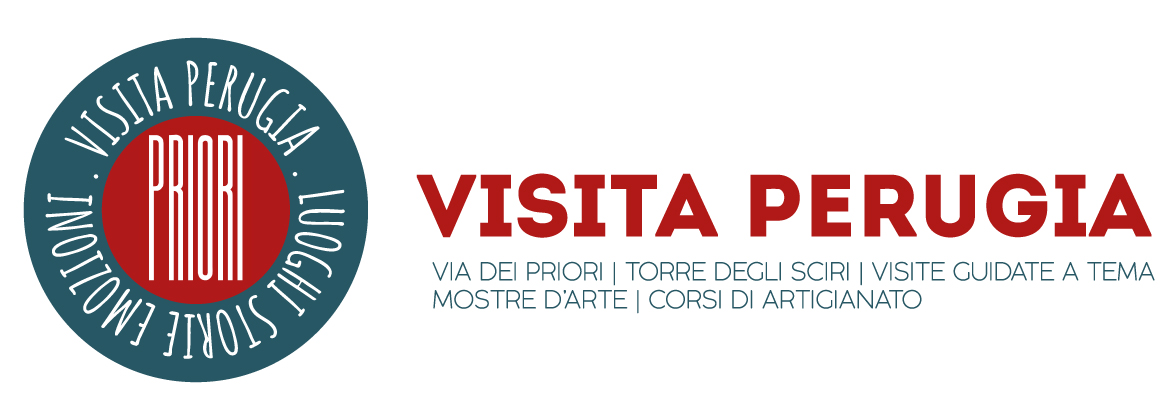

Church of San Filippo Neri. The Church of the Immaculate Conception and San Filippo Neri owes its architectural setting and its iconographic layout to the Roman church of Santa Maria in Vallicella, where it was the same San Filippo Neri who wanted all the altars of the side chapels to be dedicated to the Virgin. It is one of the most interesting examples not only in Perugia, but in Italy, of the application of the Tridentine dictates in the iconographic program, which prescribed to illustrate the mysteries of the faith with the facts of the Old Testament and with symbols, so that the illiterates had before their eyes everything they could not learn from printed books. The foundation stone of the church was laid on the day of the Immaculate Conception. Father Orazio Mancini wanted, therefore, to dedicate all the altars of the new church to the Mysteries of the life of Mary and to compose with the stories and symbols painted in each chapel a story that narrated to the faithful the virtues of the Virgin. The pictorial and plastic decoration is full of figures, symbols, and allegories intended to celebrate the greatness of the Mother of God. The general concept is the Triumph of the Immaculate, which is clear when considering the unity of concept and the order in which the symbols and the figures succeed each other.
APSE. On the high altar there is the Immaculate Conception of Pietro from Cortona. The apsidal basin is divided into 7 coffered vaults, which are decorated with the women of the Old Testament who, for various reasons, are traceable to Mary and a foreshadowing of her role for the salvation of humanity.
CHAPELS OF THE NAVE. All the altars are dedicated to Misteries of life of Virgin. Starting from the Nativity, there is then the Presentation of Mary at the Temple, the Annunciation, the Visitation, the Purification and the Assumption.
CUPOLA. The composition of the dome is divided into 6 groups, representing the 6 ages of the world, as explained by Augustine, who refers to the jars of the Wedding of Cana. It is a people of figures united in contemplating in ecstasy the Triumph of the Virgin, the Promised Woman.
NAVE. The vault is formed by four rectangular coffered vaults: three large in correspondence of the chapels and one smaller in correspondence of the choirs and the side doors.

Undoubtedly the most beautiful Baroque building in the city, built between 1626 and 1634 on a project by Pietro Maruscelli (the architect of Palazzo Madama in Rome), with a 1665 façade, inspired by the Roman church of Santa Maria in Vallicella. Inside, frescoes of the seventeenth and eighteenth centuries, whose iconographic plan was decided by the Jesuit father Orazio Mancini and the abbot Sozio Sozi and provided for the celebration and praise of the Madonna; behind the main altar, one of the masterpieces of Pietro da Cortona, the Conception of the Virgin (1662).

Contacts
+39 075 5725472

